If you’re a prospective seller, and you’re interviewing listing agents, do you care what their “list-to-sale” ratio is?
You constantly see these signs that read “sold over asking” but in a market where houses are deliberately under-priced to sell for over the asking price, is this really something worth advertising?
“Breathed Air Today,” says the button on my lapel.
It’s just the same, is it not?
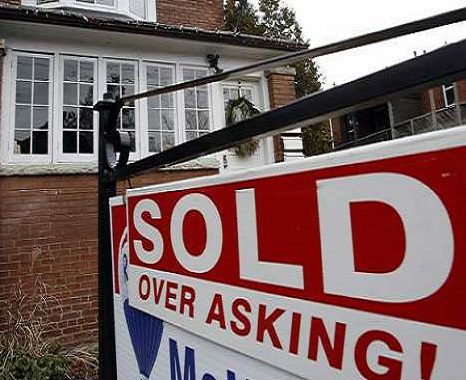
If you took a metre stick and glued it to the top of the 553-metre C.N. Tower, would it effectively make the C.N. Tower 554 metres tall?
Somebody in my office asked me the other day, “Hey, do you have one of those ‘Sold Over Asking’ sign-riders I can borrow?”
I told her that I didn’t have one, and I don’t think I’ve ever owned one.
She said, “But if you sold a property over asking, why put ‘SOLD’ on there, and not ‘Sold Over Asking’?”
Well…..doesn’t every house in Toronto sell over asking these days?
I can tie my shoes.
I can put on both my pants and my shirt in the morning with no help from my mommy.
I often eat my entire dinner without getting any food on the floor.
And believe it or not, I can under-price a house in Toronto, receive multiple offers, and sell it for over asking…
“Sale-To-List” ratio used to be an incredibly important metric in our industry, and it was even more important for prospective sellers who were looking at hiring any one of a number of Realtors.
In a normal market, and by that I mean something we here in Toronto haven’t seen for over a decade, one of the measures of how good an agent performs is what his or her list to sale ratio is, since that shows how good a negotiator that agent is, as well as to some extent, how hard he or she works, and how hard their will is.
Imagine a market, unlike ours, where a property sits on the market for 150 days. And it’s ironic that I say “days,” since we measure our Toronto market in days, whereas in, say, Houston, they’d call 150 days, “five months.”
So in a market where five months is normal, consider a listing agent who is able to get $398,000 for a property listed at $399,900. Is that incredible or what?
Perhaps in those five months, there were four offers, but all came in too low. Maybe a lowball of $360,000 was received, and the listing agent said, “Don’t even bother signing it back.” Maybe another offer of $370,000 came in, was signed back-and-forth for three days, and eventually, the listing agent told the sellers to walk away when the buyers stalled at $390,000.
Maybe in those five months. that listing agent worked every day to ensure that his sellers got the most for their house, and in the end, that $398,000 sale price on a $399,900 listing represented a 99.5% sale-to-list ratio. Incredible.
In many areas of Toronto, a 99.5% sale-to-list ratio would be awful.
And for that reason, and others we’ll get into, the public can’t really use the ratio as a metric.
In fact, if it was possible for a metric to mean less than nothing, then this would be it.
What does it say about an agent when they “achieve” 195% of the list price? Is that a badge of honour, or one of shame?
Recall the house that sold last April for $1,365,888, listed at $699,000. It made headlines, and ultimately most people ridiculed the listing agent because it was just so ludicrous. Seventy-two offers materialized, and the house, which was always worth $1.2 Million, even on a bad day, was under-listed so egregiously that even those listing agents who make it a part of their “strategy” to under-list, called this situation ridiculous.
Strategy.
That’s just it, right?
At some point in the last ten years, it became a “strategy” to under-list properties in Toronto (mainly freehold, single-family homes), hold-back offers, obtain multiple bids, and often obtain more than perceived fair market value.
I would hesitate to call it a “strategy” in 2015. It’s now more of a “norm,” and in fact, it’s pretty much an accepted practice. In fact, if I went into a seller’s house in Bloor West Village tomorrow and said, “let’s price at market value, and accept offers any time,” I think they’d ask me to leave pretty quickly.
So with all this said, are you impressed when a Realtor says, “My sale-to-list ratio is 122%?”
If you were interviewing two agents to list your house in Roncesvalles, would you consider the agent with the 118% sale-to-list ratio to be in any way better than the agent with the 112% sale-to-list ratio?
Where do the numbers come from anyways?
How is the data cleaned?
What if you have a listing for $999,900, and it sits on the market for three months, unsold. Then you reduce it to $949,900, you turn down an offer for $925,000, and it continues to sit for months. Then you re-list at $919,000, and sell it for $919,000.
You got 100% of the list price.
But you got less than the $925,000 offer that came in a few months ago.
You can make numbers say anything you want, right?
So let me throw another curveball at you, and I do so while risking letting a certain cat out of a certain bag…
My sale-to-list ratios are not good.
But that’s because it’s part of the game I routinely play in the downtown core.
Don’t get me wrong – when I list a single family home, it’s the under-list, hold-back, over-asking game that you simply MUST play in today’s market.
But for a downtown condo? And one that might not be all that hot? The strategy is the complete opposite…
I don’t want to hammer on my industry once again, but let’s just say, that there are some very new, very inexperienced, and very money-hungry buyer agents out there that might not know what they’re doing.
I come across these people all the time, and it’s why I’ve often taken the path less-travelled with my condo listings.
So what is my dirty little secret?
Over-pricing.
If I have a condominium listing coming out and I think it’s worth $350,000, the comparable sales suggest it’s in that price point, and the seller agrees with the valuation, I might be inclined to list it for $369,900.
In fact, this is a true story…
So with the help of the seller, we clean it, paint it, stage it, market it, and get it up for sale looking better than it’s ever looked, even when the seller lived there.
We get showings, and somewhere along the line – maybe in the midst of some more experienced agents and buyers who think “this is over-priced,” along comes a naive buyer, with an eager agent, who get lured in by the fantasy of the way the condo looks, and the idea of finally owning a home (ie. the buyer) and making a sale (ie. the agent).
So the buyer always asks, “What do you think we can offer?”
And in a very efficient market, where condos routinely sell every day for slightly below asking, the buyer agent says, “Probably $360,000. Maybe slightly less, but we’ll get a sign back.”
Begin the dance.
Certain cultures or demographics like to sign back and forth five times so they can feel good about themselves – that’s fine. Others might just call me up and say, “XX PRICE, TAKE IT OR LEAVE IT,” like they learned from watching “Million Dollar Listing.”
Either way, I find that I’ve sold a lot of condos for more than they’re worth, simply by pricing them at more than they’re worth. In this case, I sold this condo for $362,000, which the buyer thought was great, because she got it for $8,000 under asking, but this model had never sold for more than $348,000 before, and my seller was ecstatic.
I’ll give you a more recent example, although this deal is still conditional, so I’ll leave out the details.
I had a listing in a building where the average days on market is over 40; where units continuously come up for sale, and either expire, or are terminated, since it’s so hard to sell in.
I sold my listing in 12 days, and set a new record in the building for price – beat the previous high by about 4%.
Why? How?
Well, we “let it go” for substantially under asking, although our asking price was hyper-inflated.
We allowed the buyer to sign back three times, until they felt they had taken us.
You almost never see condos sell for this much under asking! What a deal! Right????
I could care less that my sale-to-list ratio is a meager 96% for this property, because I got my clients more for their unit than anybody has ever received, and in less than two weeks.
It’s not about my stupid stats. It’s about my happy clients.
The irony with most of those jaw-dropping sale-to-list ratios is – if they’d just listed lower, their ratio would be HIGHER!
That $799,900 listing that sold for $950,000 – that’s 119% of list.
But if you’d only listed it at $749,900 instead, it would be 127% of list!
And if you’d only listed it at $1, it would be 950,000%.
Just imagine: being able to advertise that you have a sale-to-list ratio of nine-hundred-fifty-THOUSAND percent!
Now that is impressive, and that’s a badge of shame, that should be worn……with honour!
The more experienced readers will likely comment, “It’s the same problem with ‘days on market.’ If somebody sells a listing in six days, but the previous listing was 60 days, it still shows up as only six days and completely skews the data.”
You would be entirely correct.
In the end, the same solution applies: do your own research. Run your own numbers, do your own due diligence, and don’t always believe what’s right in front of you.
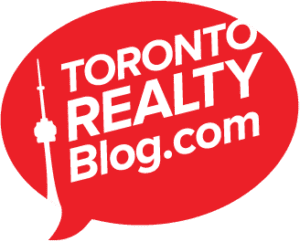










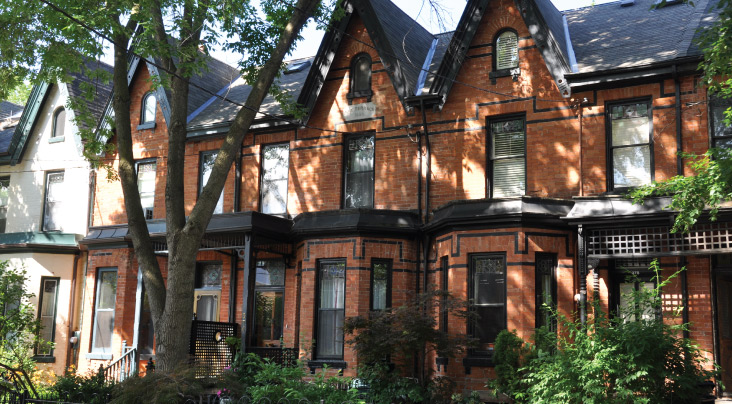





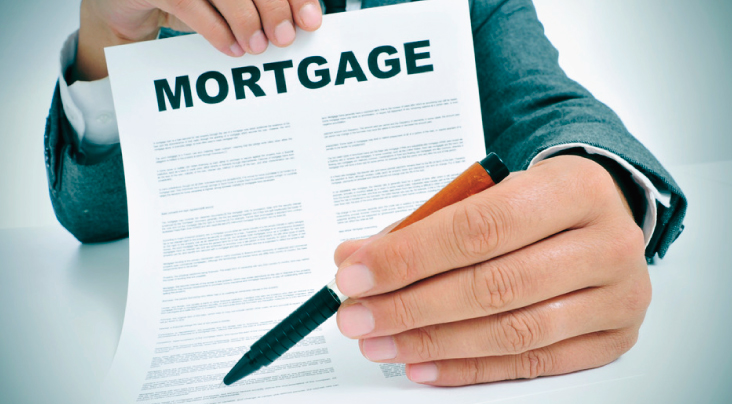













Joe Q.
at 9:04 am
David — this is a great post, and neatly explains why “sold over asking” is so disingenuous.
My short take on the issue is this: if the “list price” of a home is all about marketing and has no concrete meaning (as has been pointed out on this blog many times), it follows that the “sale-price-to-list-price ratio” is also all about marketing and has no concrete meaning.
Pete
at 9:52 am
Sounds like some of your colleagues want it both ways. Use the old “sold over asking” as an honour while still reaping the benefits of artificially low list prices/bidding wars.
Marina
at 11:29 am
The problem is trying to attach an absolute measure to an outcome that has no pre-determined value. A house is listed at X and sells for Y, but the real question is how much could another agent have sold it for? And you can’t tell that from numbers alone.
Even an agent review board like Homestars will likely get overrun by the friends of agents posting rave reviews.
Recommendation from friends and your own legwork – no short cuts here.
Jonathan
at 11:58 am
Here’s a somewhat related question… how accurate are appraisal values? If you got five appraisers to review the same house, would their values be in the same ballpark? If they are generally accurate (or at least consistent, if perhaps too conservative) then Sale Price to Appraised Value would be a better way to measure Realtor value.
If MPAC assessed values were at all accurate, Sale Price to MVA would also be a good metric. Of course here in Ontario the so-called “market value assessment” system bears little resemblance to reality so I assume that it’s of no use in this case.
Gordy
at 6:08 pm
Appraiser, can you chime in here on appraising?
Long Time Realtor
at 6:46 pm
Generally speaking appraisals are performed on MLS listings after they sell, not before. MPAC MVA’s are not and should not be utilized as up-to-date valuations by lenders. They are point-in-time valuations for tax purposes and are stale-dated one day after the assigned date.
It is rare that a sold property does not appraise, even in a multiple offer – sold over asking situation, for the reasons already outlined by our gracious host. Listing price is never in consideration, only sold prices matter in the appraisal business.
Jonathan
at 8:59 am
So, by saying that “it is rare that a sold property does not appraise, even in a multiple offer” you mean that most appraisals done after a sale are sufficiently high to justify the sale price? To me it seems a bit ass-backwards to do an appraisal after the sale, because that selling price will obviously affect the appraiser’s frame of reference.
In my case, our mortgage lender had an appraisal done before giving the go-ahead to a refinance. In that case there was no sale price to use as a reference, but they were still able to come up with an objective value for the house. As a result, my conclusion was that it’s relatively easy for an objective third party to estimate the value of a house.
Of course, a seller has no reason to have an appraisal done before putting their house on the market other than to ensure that their agent is being honest.
Appraiser
at 11:53 am
@Jonathan: Long Time Realtor is exactly right in reference to appraisals performed for MLS transactions. However, most of the appraisals I do are for mortgage renewals and lines of credit, which are performed as you say pre-sale and without a specific reference point – except for the owner’s estimated market value, to which I pay almost no attention.
Having said that, it should be noted that the appraisal process does not differ in either case and your conclusion regarding third-party objectivity is exactly correct. The subject property’s estimated market value is determined in relation to the best available comparables that have actually sold.
jeff316
at 12:57 pm
I think the over-asking stats are actually useful for buyers, because it is a window into a selling agent’s tactics.
I do agree with Joe that over-asking stats are meaningless to sellers.
Kyle
at 1:16 pm
Putting “Sold Over Asking” on a SOLD sign carries as much weight as when a Pizza Restaurant puts “World Famous” on their window. Just meaningless and cliche.
Chroscklh
at 1:36 pm
I no like play the game with statistics. I work with one realtor few year back, market not hot like now – house list $1.3mm for many day, month at least. Realtor say “I get you house full page spread in National Post!” Wow – I think. This good marketing. 2 week later, no spread, no sale. We drop price $1.1mm, sell next day $1.15mm – not only realtor say “sold over asking” but to add assault to injury – he get full page profile in National Post “recently sold” section with “1 day” as # of day. Let me tell you I pretend choke this guy many time in back of mind.
GinaTO
at 11:20 am
Don’t forget, though, that as people reading this blog, we are more knowledgeable about real estate than the average consumer. I would be curious to know what someone who doesn’t follow real estate as obsessively as we all do thinks of these “sold over asking” signs. I compare it to mentions on food packages: “gluten-free” on an item that never contained gluten to begin with, or “less sugar” when the amount of sugar has been reduced by only 5%. People interested in nutrition and food marketing will know to be aware of these claims, but not necessarily the everyday person going grocery shopping. After all, this type of advertising would not exist if it didn’t work, at least some of the time.
There is an agent that seems very successful in my area (Wallace-Emerson) and always sells over asking… but the under-pricing of his listings makes me chuckle every time.
pavlo
at 4:49 pm
Per the comments by Kyle and GinaTO – when my house sold last year, the scruffy guy who collects empties on our street made a point of laughing at the sold sign that went up (“whooooaaa!!! OVER ASKING!! WOW!!).
When the bottle collectors are mocking you, i think it’s safe to say that the average consumer has caught on to this particular realtor trick.
Ed
at 1:06 pm
Maybe the bottle collector was also a Realtor?? Or Appraiser.
navyliz
at 3:36 pm
I’m curious how realtors decide exactly how much to under ask? If a single family home is estimated to sell for 1.1 to 1.3M (or ultimately sells in that range), how does the realtor decide to price it at 799 vice 949. Is there a magic formula? What if a house was purchased 1-3 years ago for over 1M… are you still gonna price it under?
Ed
at 1:07 pm
David, do you keep track of your Corsi and Fenwick numbers?
Wut
at 12:40 am
The only stat I’d want to know is “sale-to-listing” ratio. Meaning, if you got 100 contracts to sell 100 homes, how many homes did you sell?
Now you may argue this unfair as the client could demand the price to be too high (either through asking price or negotiation) so that’s not the realtors fault. However I’d want a realtor who did not waste their time with those clients and wanted to work with clients who actually want their home sold for a fair price.
Maggie
at 11:26 pm
Yes, me too. That’s actually what I thought “sale-to-list” meant before I read this blog post.